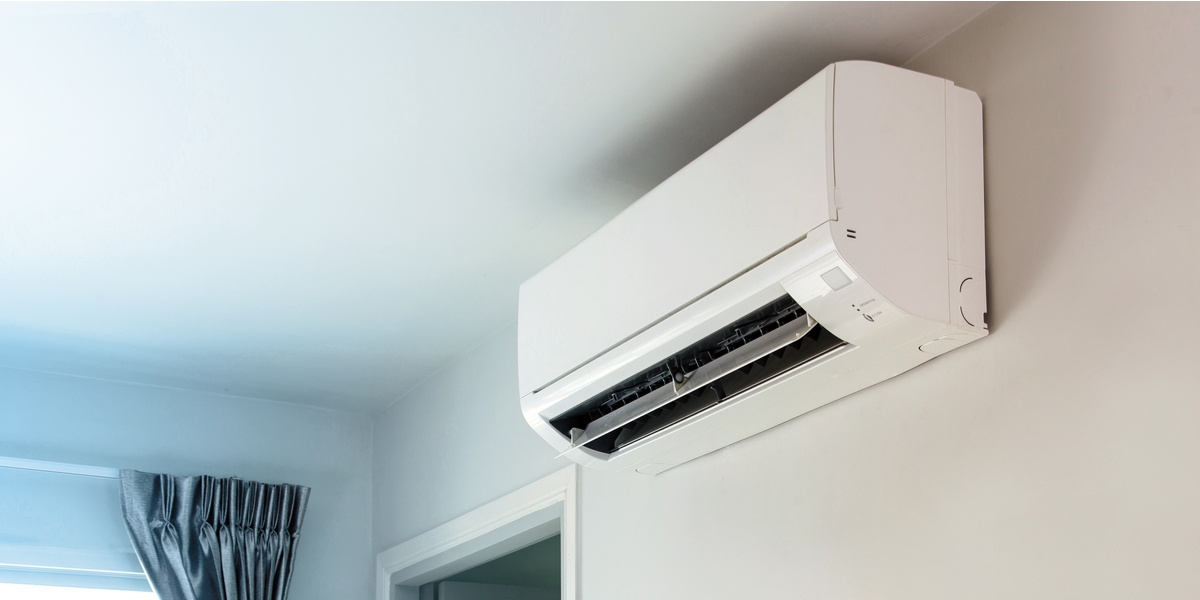Overview of Ductless Mini-Split Units: Air Conditioners and Heat Pumps

Ductless mini-splits provide a high-efficiency alternative to conventional window-type or wall-type HVAC equipment. In addition to offering energy efficiency, ductless mini-splits can be installed with minimal modifications to indoor spaces. They can be especially useful in sturdy constructions such as pre-war apartment buildings, where the installation of ducted HVAC systems is especially challenging.
Based on their function, ductless mini-splits can be classified into two main types: air conditioners and heat pumps. While AC units are exclusively for space cooling, heat pumps offer reversible operation and can also provide heating during the winter. In heating mode, heat pumps typically consume less than 50% of the electricity demanded by resistance heaters, or even less than 25% if you go for a top-tier unit.
The most efficient heat pumps can match the operating cost of gas-based space heating, but with zero emissions if the electric power comes from a clean source.
Mini-Split System Configurations
Mini-splits can also be classified based on their physical construction. Both air conditioners and heat pumps are available in the system configurations described below:
|
MINI-SPLIT CONFIGURATION |
DESCRIPTION |
|
1) Floor mounted |
Suitable for locations where the upper wall area is limited. A floor mounted mini-split can easily fit under a window. |
|
2) Slim duct |
Similar appearance to central AC units, uses minimal ductwork, and can be installed within the ceiling or a hanging enclosure. |
|
3) Compact cassette |
A very compact type of mini-split, which uses smart fans for energy savings and uniform air distribution. |
|
4) Wall mounted |
The traditional configuration, mounted on the upper portion of a wall and connected to the outdoor condenser. The length of the refrigerant line can be minimized by installing the condenser unit right at the other side of the wall. |
Ductless Mini-Split Air Conditioners
The efficiency of a ductless mini-split AC is normally described with a performance metric called the Seasonal Energy Efficiency Ratio (SEER). The SEER is a ratio of cooling output (BTU) to electricity input (watt-hours) over a typical cooling season, and it can be compared with the fuel economy value of a car: just like a 50 MPG car uses half as much fuel as a 25 MPG car, a SEER 20 AC unit consumes half the energy needed by a SEER 10 unit.
Alternatively, you may find the cooling efficiency indicated as an Energy Efficiency Ratio (EER), which is for specific test conditions rather than the entire cooling season. Some units also display a Coefficient of Performance (COP), which is a ratio of cooling output to power input, both quantities expressed in watts.
Ductless Mini-Split Heat Pumps
As previously stated, heat pumps can operate in either heating mode and cooling mode. When in cooling mode, they are basically air conditioners and their efficiency is described a SEER value. When they operate in heating mode, on the other hand, the performance metric is the Heating Seasonal Performance Factor (HSPF), a ratio of heating output (BTU) to electricity input (watt-hours) for a typical heating season.
Note that a heat pump has separate SEER and HSPF values. The SEER is normally higher, since heat pumps are less efficient in the winter. Nevertheless, they are still much more efficient than an electric resistance heater:
- A resistance heater delivers one kWh of heat for every kWh of electricity consumed.
- Heat pumps deliver from 2 to 4 kWh of heat for every kWh of electricity, depending on their efficiency.
Incentives for Ductless Mini-Splits in NYC and NJ
Con Edison manages an incentive program for energy efficiency and renewable generation measures in NYC, and ductless mini-splits are covered.
- The rebate for residential consumers is $300 per unit, increasing to $600 per unit for certain neighborhoods in Queens and Brooklyn. An additional rebate of $135 is available if you add an approved smart thermostat ($185 under the neighborhood program).
- The rebate for commercial energy consumers is $200/ton, in Queens and Brooklyn neighborhoods covered by the program.
In the case of New Jersey, incentives are managed through the NJ Clean Energy Program.
- The COOLAdvantage subprogram offers incentives for existing residential constructions. The rebate for mini-split air conditioners and heat pumps is $500 per unit.
- The SmartStart Buildings subprogram applies for multifamily and commercial buildings. The rebate is determined from tables, based on equipment capacity and efficiency.
Find the best HVAC upgrades for your building.
Final Recommendations
HVAC upgrades can yield an excellent return on investment, especially if the equipment in your building is very old. For example, window-type and wall-type units are not only inefficient themselves; they also create a gap in the building envelope, increasing both heating and cooling loads.

Michael Tobias
Michael Tobias, the Founding Principal of NY Engineers, currently leads a team of 50+ MEP/FP engineers and has led over 1,000 projects in the US
Join 15,000+ Fellow Architects and Contractors
Get expert engineering tips straight to your inbox. Subscribe to the NY Engineers Blog below.



